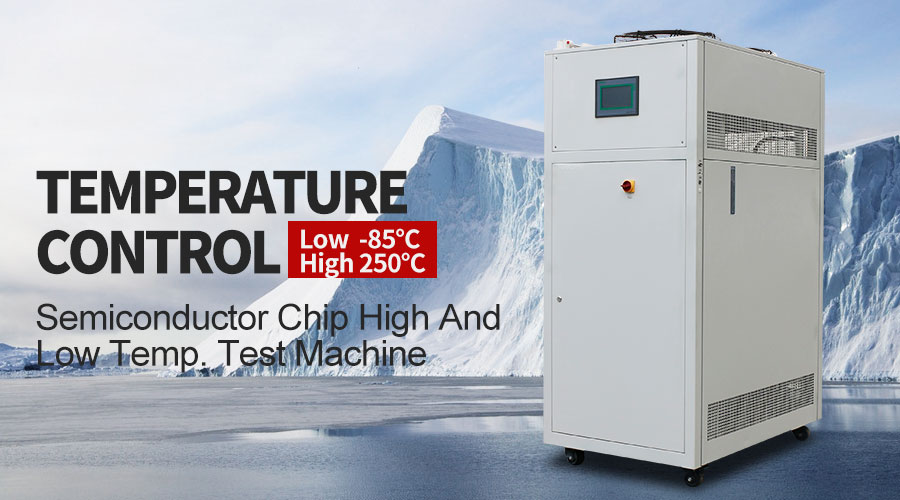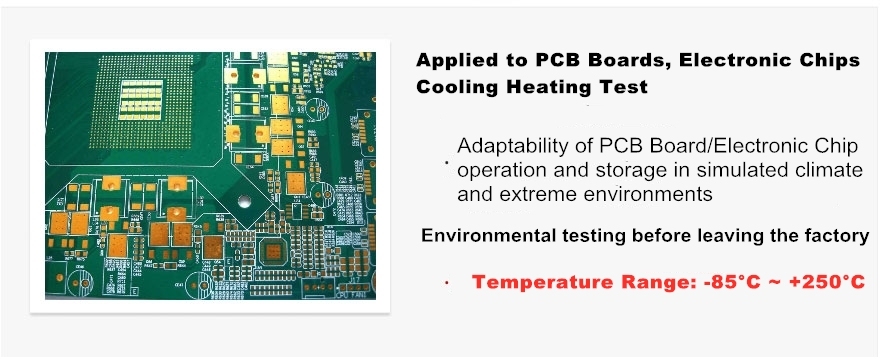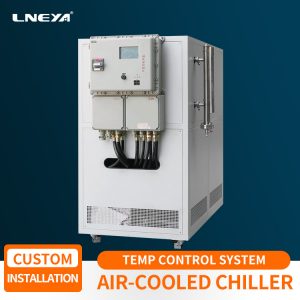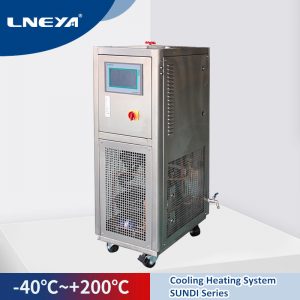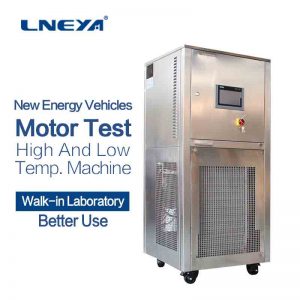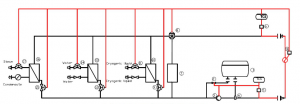Система контроля температуры для управления температурой тестирования микросхем интегральных микросхем
Advances in semiconductor technology have led to the development of next-generation electronic devices such as integrated circuits, which have more and more active components, higher circuit complexity, smaller area, and tighter wiring. These attributes generate more heat in the electronic device and provide fewer opportunities for heat dissipation. This results in higher operating temperatures and therefore reduces reliability, especially for integrated circuits operating at high frequencies and high thermal loads. The small size of integrated circuits and tightly packed circuits of surrounding equipment make it more difficult to cool integrated circuits using conventional fans or heat sinks. In addition, integrated circuits may experience large temperature fluctuations that affect their performance attributes, such as the timing of mathematical operations, data transfers, and read / write operations, especially at high frequencies. Temperature changes as low as ± 5 ° C can cause changes in operating frequency up to 20 MHZ, which can severely affect chip performance.
Prior art methods for controlling the temperature of integrated circuits use a combination of a heat sink attached to the integrated circuit and a cooling fan that directs airflow through the heat sink. However, it is difficult to remove a large amount of heat by these methods. First, the thermal mass of the heat sink increases the time it takes for the integrated circuit to reach the required temperature. Second, once the integrated circuit has risen to the required temperature, the relatively low specific heat capacity of the air limits the ability of the integrated circuit. The cooling system removes excess heat at a sufficiently high rate. For these temperature control systems, it is particularly difficult to quickly respond to large temperature changes that may occur in high-performance chips.
The bulky heat sink and cooling fan during the test of the integrated circuit chip can interfere with the operation of the robot processor used. The robot handler has an articulated arm with a vacuum port for picking up integrated circuit chips from a rack and fixing them in a test socket. When powering the integrated circuit, various read / write operations are performed on the integrated circuit. Typically, one or more radiators and cooling fans are connected to the arm of the robot, which makes the arm bulky and hinders its ability to pick up a single integrated circuit and place it accurately in a test socket. Therefore, it is desirable to have a temperature control system that is compact, lightweight, and can be easily retrofitted to existing test systems.
Therefore, there is a need for a temperature control system capable of maintaining electronic equipment at a predetermined temperature. It is also desirable for temperature control systems to rapidly raise and lower the temperature of electronic devices. It is further desired that the temperature control system be compact, lightweight, and suitable for use with existing automatic testers.
Lneya actively explores and researches the component test system, which is mainly used for temperature test control in integrated circuit chip testing. It has wide temperature orientation and high temperature rise and fall. The temperature range is -92 ° C ~ 250 ° C. This product is used in harsh environments. In the manufacture of semiconductor electronic components, the assembly of IC packages, as well as engineering and production testing phases include electronic thermal testing and other environmental test simulations at temperatures (-45 ° C to + 250 ° C). During the test, the excellent temperature is completed. Once the integrated circuit chip is put into actual use, it can be exposed to extreme environmental conditions to meet stringent military and telecommunication reliability standards.
Похожие рекомендации
-
Условия окружающей среды для установки чиллеров с воздушным охлаждением
1671Как мы все знаем, установка большинства машин должна соответствовать окружающей среде и условиям. Конечно, наши промышленные чиллеры с воздушным охлаждением не являются исключением. Если чиллер с воздушным охлаждением устанавливается не в первый раз, это принесет много ...
Посмотреть детали -
Метод отключения в случае отказа высокоточного высокотемпературного циркулятора
1859Высокоточный высокотемпературный циркулятор является одним из видов оборудования, используемого в фармацевтической и химической промышленности для поддержки различных реакторов. Если во время эксплуатации произойдет аварийное отключение электроэнергии, пользователям следует обратить внимание на оперативн...
Посмотреть детали -
How To Reduce Operating Costs For Electric Vehicle Power Battery Testing Equipment?
1704Since many harsh environments easily affect the operating power of electric vehicle power battery testing equipment, in order to ensure the safety of equipment operation, enterprises need to choose a suitable safety environment when installing ele...
Посмотреть детали -
Chemical synthesis process control system temperature control system TCU
1787Today, let's talk about our DCS integrated control system (temperature and other control of synthetic process). Scalability: the system is an open system, which provides standard TCP / P data communication interface protocol, interface software an...
Посмотреть детали
 LNEYA Промышленные чиллеры Производитель Поставщик
LNEYA Промышленные чиллеры Производитель Поставщик









